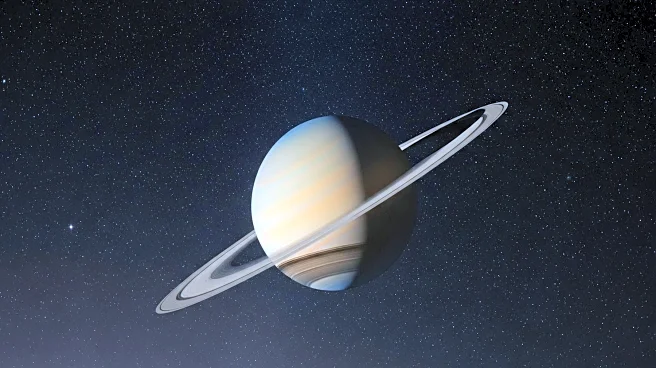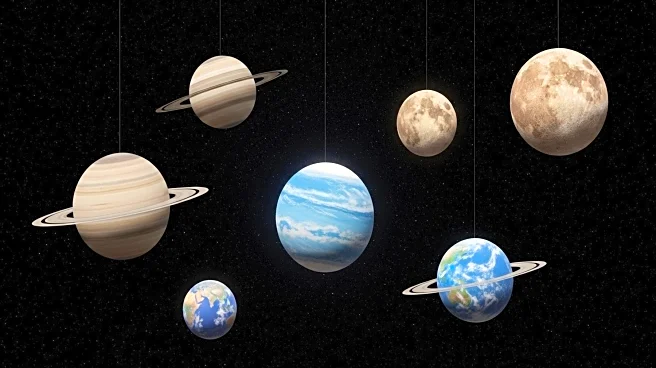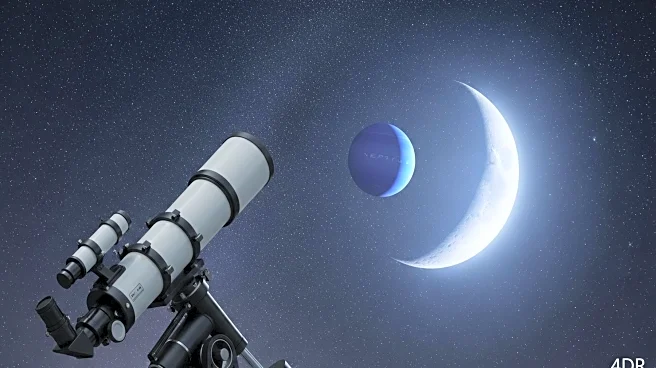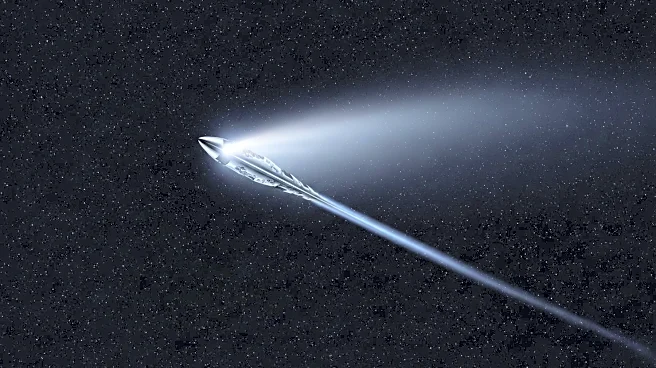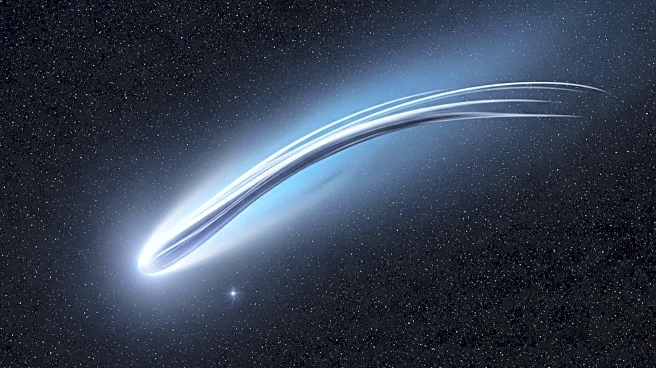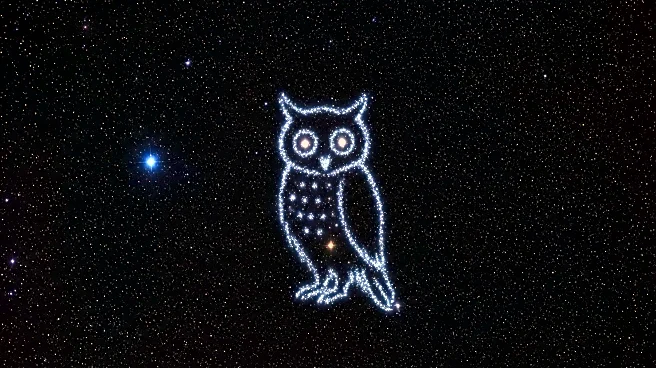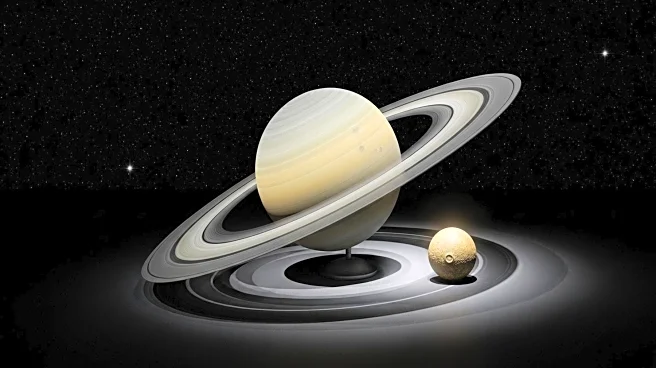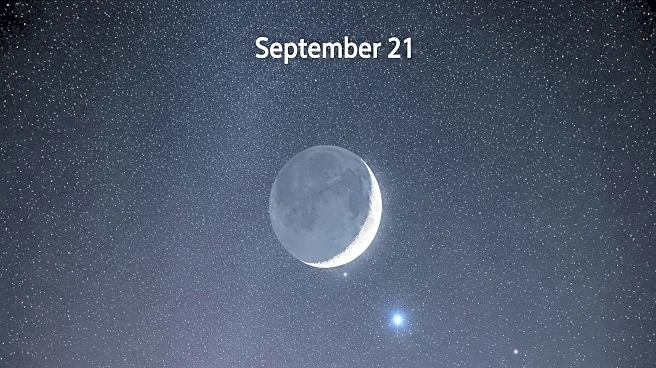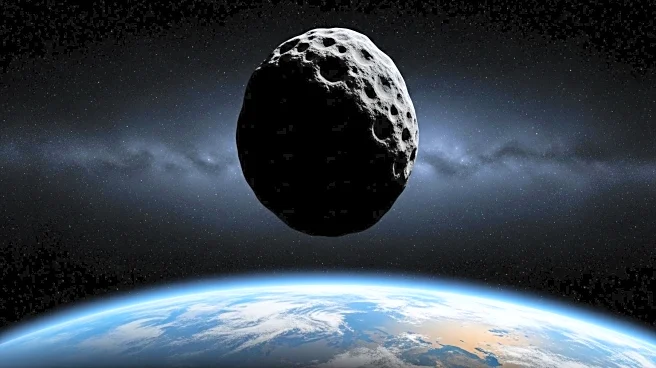What's Happening?
Saturn's largest moon, Titan, will cast its shadow across the planet's surface in a rare astronomical event on September 20, 2025. This phenomenon occurs once every 15 years when Titan's orbital path aligns edge-on with Earth, allowing its shadow to be visible on Saturn. The transit will begin at 1:09 a.m. EDT and last for over two hours, ending at 3:34 a.m. EDT. During this time, Titan's shadow will move across Saturn's cloud tops, providing a unique viewing opportunity for astronomers and stargazers. Saturn will be visible in the eastern sky, below the constellation Pisces, and can be observed with telescopes of 8-inch aperture or larger at 200X magnification.
Why It's Important?
This event is significant for both amateur and professional astronomers as it provides a rare chance to observe the dynamics of Saturn's moons and their interactions with the planet. The shadow transit offers insights into the orbital mechanics of the solar system and the gravitational influences between Saturn and Titan. For the general public, it presents an opportunity to engage with astronomy and appreciate the celestial phenomena that occur beyond Earth. The event also highlights the importance of telescopic technology in enhancing our understanding of space and encouraging interest in astrophotography and skywatching.
What's Next?
Following the Titan shadow transit, Saturn will reach opposition on September 21, 2025, making it appear opposite the sun in Earth's sky. This will be an ideal time for stargazers to observe Saturn, as it will be at its brightest and closest to Earth. The planet will be visible from sunset to dawn, allowing viewers to explore its cloud surface and rings. The final shadow transit of Titan for the year is scheduled for October 6, 2025, providing another opportunity for observation. Stargazers are encouraged to use telescopes to capture detailed images of Saturn during these events.
Beyond the Headlines
The Titan shadow transit underscores the intricate gravitational relationships within our solar system and the precision required to predict such events. It also highlights the role of technology in expanding our understanding of space, as advanced telescopes enable detailed observations of distant celestial bodies. This event may inspire further interest in space exploration and the study of planetary systems, contributing to the broader scientific discourse on the universe's complexities.

